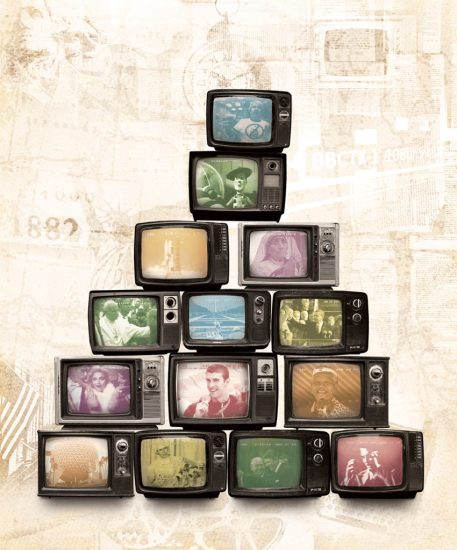
Since it began recording nightly news broadcasts in 1968, the Vanderbilt Television News Archive has amassed more than 62,000 hours of video content. That is the equivalent of more than seven years of uninterrupted viewing, but even if one were ambitious enough to try watching it all, the finish line would remain forever out of reach. The archive, housed within the Jean and Alexander Heard Libraries, continues to grow, adding about three and a half hours of video content every day.
Preserving all that footage for future generations comes with plenty of challenges. Among them is how to make such an invaluable archive available to researchers in a cost-effective way. The VTNA’s solution—using artificial intelligence to successfully transcribe the entire archive and provide keyword search capabilities for the newscasts—was one of several case studies explored during the Cultural Heritage Preservation Summit hosted by the libraries July 19–20.
Bringing together experts with more than 100 in-person and online registrants from across the United States and Canada, the summit showcased the libraries’ leadership in digital preservation and access. In addition to the VTNA, the libraries support several projects with significant digital preservation components, including the Slave Societies Digital Archive led by Gertrude Conaway Vanderbilt Professor of History Jane Landers.
“Vanderbilt’s libraries are at the forefront of efforts to digitally preserve the world’s cultural heritage and provide access to it in perpetuity, and the summit further established us as a leader in these areas,” said University Librarian Jon Shaw, who earlier this summer delivered talks on digital preservation at conferences hosted by Amazon Web Services, Oak Ridge National Laboratory and the University of Tennessee–Knoxville. “The summit was an outstanding opportunity to elevate important conversations around digital preservation and to empower other archivists with the knowledge and resources to pursue their own projects, helping ensure that irreplaceable cultural assets aren’t lost to time.”
The summit, which focused on digital preservation of audiovisual resources, opened with a keynote presentation by Paul Conway, associate professor emeritus at the University of Michigan School of Information. Conway spoke about the scholarly value of radio broadcast recordings of the Music Time in Africa program, Voice of America’s longest-running radio broadcast to the African continent. He also conducted individual consultations with registrants seeking advice on their preservation projects and later joined Tim Gollins, director of Vanderbilt’s Special Collections and University Archives, for an open dialogue that Shaw moderated.
Among the topics covered, Conway and Gollins discussed how some of the best digital preservation projects start “seven layers down” in organizations, as Conway put it, and how partnerships can be fruitful for developing nascent ideas. Gollins also highlighted the impressive accomplishments of individuals working on their own.
“Some of the most exciting stuff in the archive space that I’m aware of, particularly in the access space, has been through crowdsourcing and through motivated individuals who care about something specific,” Gollins said, citing an example of a small group of individuals who created a comprehensive database that has transformed genealogical research in his native U.K. “It could be something incredibly geeky, but they care enough about it that they will invest their patience in it.”
Day 2 of the summit was dedicated to a seminar workshop featuring five case studies that explored the theme of mitigating risk in audiovisual digital preservation. The presenters were Conway; Jim Duran, director of the VTNA; Martin Fisher, curator of recorded media collections at Middle Tennessee State University’s Center for Popular Music; Rebecca Frank, assistant professor at the University of Tennessee–Knoxville’s School of Information Sciences; and Rogers Hall, Wachtmeister Family Professor of Education Emeritus at Vanderbilt Peabody College of education and human development.
The presentation topics ranged from advanced technologies, such as Duran’s use of AI-powered speech recognition tools for transcribing newscasts, to more homemade solutions, including a rudimentary tool of popsicle sticks and felt pads that Fisher devised for applying just the right amount of pressure to transfer audio from damaged sound tape cartridges.
“I’m delighted that the Cultural Heritage Preservation Summit resulted in lots of meaningful exchange and creative problem-solving,” said summit organizer Elizabeth Batiuk, curator of Vanderbilt’s Performing Arts Special Collections. “Hopefully, everyone who attended came away with new insights and innovative ideas that will inform their work going forward. We hope to inspire preservation projects that will benefit not just researchers but society as a whole.”
Watch video highlights of the Cultural Heritage Preservation Summit: